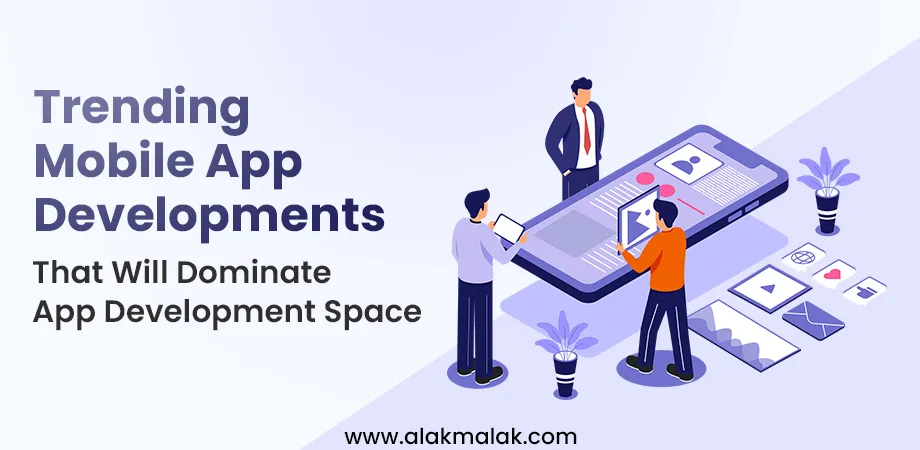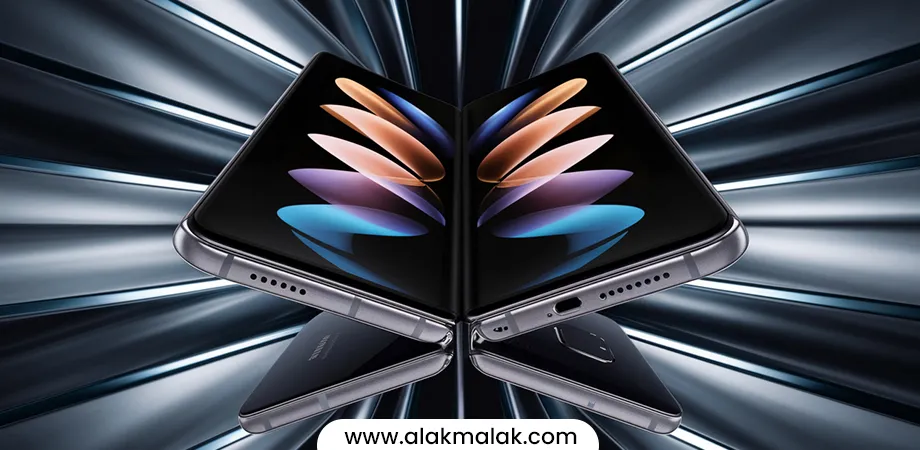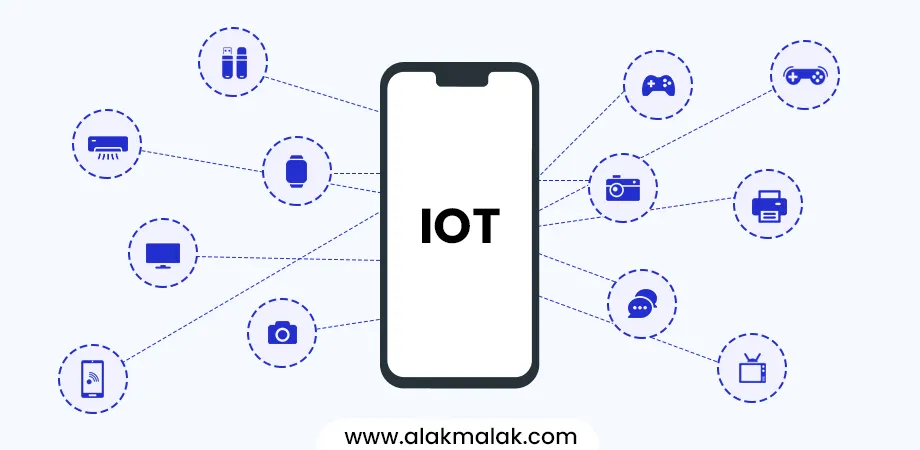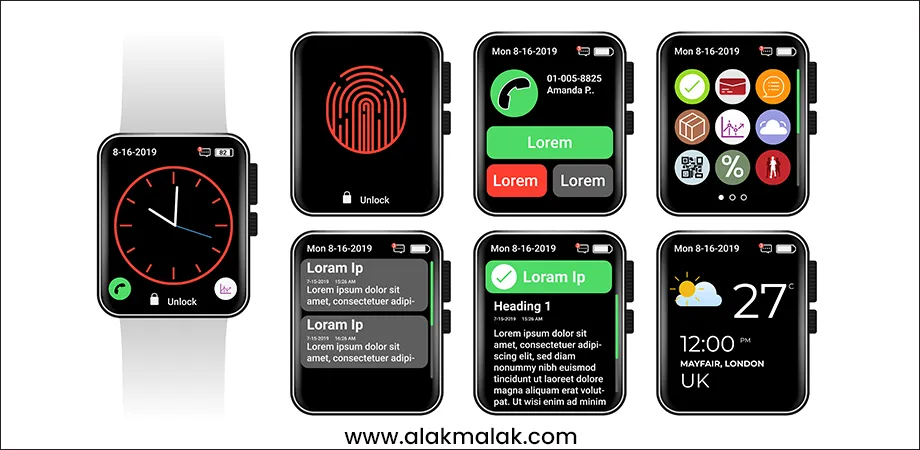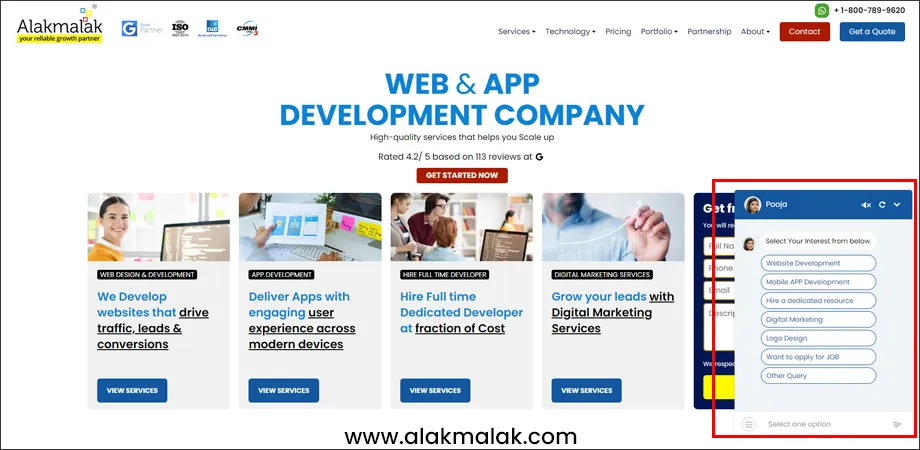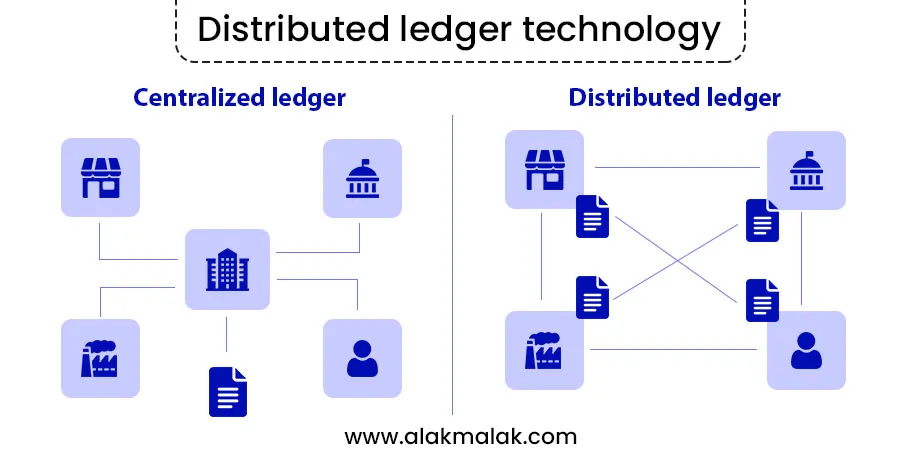Imagine having a personal assistant that can anticipate your every need, a fitness coach that understands your body better than you do, or a smart home system that automatically adjusts to your preferences. These scenarios may seem like science fiction, but they are rapidly becoming a reality thanks to the latest advancements in mobile app development.
In today’s fast-paced world, mobile apps have become an integral part of our daily lives, revolutionizing the way we work, communicate, and entertain ourselves. However, the app development landscape is constantly evolving, with new technologies and trends emerging at a breakneck pace. Keeping up with these changes is crucial for businesses and developers who want to stay ahead of the curve and deliver exceptional user experiences.
This blog post aims to explore the most significant mobile app development trends that are set to dominate the industry in 2024. From cutting-edge technologies like augmented reality (AR) and the Internet of Things (IoT) to user experience (UX) design principles and cross-platform development frameworks, we’ll provide you with a comprehensive overview of what to expect in the coming year.
With over 18 years of experience as leading mobile app development company, our team of experts has witnessed firsthand the rapid evolution of this field. We have a deep understanding of the latest trends, technologies, and best practices, enabling us to provide valuable insights and actionable advice to help you stay ahead of the competition.
11 Mobile App Development Trends
TABLE OF CONTENT
1. 5G Connectivity
2. Apps for Foldable Devices
3. Internet of Things
4. Machine learning(ML) and Artificial Intelligence (AI)
5. Beacon Technology
6. Wearable Devices
7. Augmented Reality (AR) and Virtual Reality(VR)
8. Chatbots
9. Progressive Web Apps
10. Voice User Interfaces
11. Blockchain Technology
Tools and Resources
Case Study 1: Augmented Reality in Retail – IKEA Place App
Case Study 2: Voice User Interface in Smart Home Automation – Amazon Alexa App
Embrace the Future: Stay Ahead of the Curve with Cutting-Edge Mobile App Development
1. 5G Connectivity
5G connectivity is the next generation of wireless technology, promising faster speeds, lower latency, and increased reliability compared to previous generations. With the rollout of 5G networks worldwide, mobile app developers can leverage this technology to create more responsive, data-intensive, and immersive experiences for users.
Why it is Important
The widespread adoption of 5G connectivity is a game-changer for mobile app development. According to a report by Ericsson, 5G is expected to account for 35% of global mobile data traffic by 2024. With faster download and upload speeds, apps can handle larger files, stream high-quality media, and process data more efficiently. Lower latency also enables real-time interactions, making it ideal for applications like augmented reality (AR), virtual reality (VR), and online gaming.
How to Implement
To take advantage of 5G connectivity, mobile app developers should consider the following steps:
- Optimize the app for 5G: Ensure the app can handle the increased bandwidth and low latency offered by 5G networks. This may involve optimizing media delivery, reducing load times, and improving overall performance.
- Integrate 5G-specific features: Explore new features and functionalities enabled by 5G, such as edge computing, network slicing, and ultra-reliable low-latency communication (URLLC).
- Test on 5G networks: Thoroughly test the app on 5G networks to identify and resolve any compatibility issues or performance bottlenecks.
- Educate users: Inform users about the benefits of using the app on 5G networks and provide guidance on how to enable 5G connectivity on their devices.
2. Apps for Foldable Devices
Foldable devices, such as smartphones and tablets with flexible displays, have been gaining traction in recent years. These devices offer a unique form factor that combines the portability of a phone with the larger screen size of a tablet. As foldable devices become more mainstream, there is a growing demand for apps specifically designed to take advantage of their innovative design.
Why it is Important
Developing apps for foldable devices is crucial for several reasons. First, it allows businesses to stay ahead of the curve and offer cutting-edge experiences to their users. According to a report by IDC, shipments of foldable devices are expected to reach 27.6 million units by 2025, representing a significant market opportunity.
How to Implement
To develop apps for foldable devices, mobile app developers should consider the following steps:
- Understand the device specifications: Familiarize yourself with the various foldable device models, their screen dimensions, aspect ratios, and hardware capabilities to ensure optimal compatibility and performance.
- Implement responsive design: Utilize responsive design principles to ensure your app adapts seamlessly to different screen configurations, orientations, and form factors.
- Leverage multi-window functionality: Take advantage of the ability to run multiple apps simultaneously by implementing multi-window support, allowing users to multitask more efficiently.
- Optimize for device postures: Adapt your app’s user interface and interactions based on the device’s posture (folded, unfolded, or tent mode) to provide an intuitive and comfortable experience.
- Test extensively: Thoroughly test your app on various foldable devices to identify and resolve any compatibility issues, performance bottlenecks, or usability challenges.
3. Internet of Things
The Internet of Things (IoT) refers to the interconnected network of physical devices, vehicles, home appliances, and other items embedded with electronics, software, sensors, and network connectivity, enabling them to collect and exchange data. As IoT technology continues to advance, IoT App Development Services are playing a crucial role in bridging the gap between these connected devices and users, enabling seamless control, monitoring, and automation.
Why it is Important
Integrating IoT capabilities into mobile apps is becoming increasingly important for several reasons:
- Convenience and accessibility: IoT-enabled mobile apps allow users to control and monitor their connected devices from anywhere, at any time, using their smartphones or tablets.
- Data insights and analytics: These apps can collect and analyze data from IoT devices, providing valuable insights and enabling data-driven decision-making.
- Automation and efficiency: By leveraging IoT technology, mobile apps can automate various tasks and processes, leading to increased efficiency and productivity.
How to Implement
To incorporate IoT capabilities into mobile apps, developers should consider the following steps:
- Identify IoT use cases: Determine the specific IoT devices and systems that the app will interact with, and define the desired functionalities and features.
- Choose the right IoT platform: Select a reliable and scalable IoT platform that supports the required protocols, security standards, and integration capabilities.
- Implement device communication: Develop mechanisms for secure and efficient communication between the mobile app and IoT devices, utilizing protocols like MQTT, CoAP, or HTTP.
- Ensure data security and privacy: Implement robust security measures, such as encryption, authentication, and access controls, to protect user data and ensure privacy.
- Develop user-friendly interfaces: Design intuitive and visually appealing interfaces that allow users to easily monitor, control, and interact with their IoT devices.
- Integrate analytics and automation: Incorporate data analytics capabilities to provide insights and enable automation of tasks and processes based on predefined rules or user preferences.
4. Machine learning(ML) and Artificial Intelligence (AI)
Machine learning (ML) and artificial intelligence (AI) are rapidly transforming the way we interact with technology, and mobile apps are no exception. By incorporating these advanced technologies, mobile apps can offer more personalized, intelligent, and efficient experiences to users. From predictive analytics and natural language processing (NLP) to computer vision and deep learning, the potential applications of Machine Learning and Artificial Intelligence in mobile app development are vast and exciting.
Why it is Important
Integrating ML and AI into mobile apps is crucial for several reasons:
- Personalization: ML algorithms can analyze user data and behavior patterns to provide personalized recommendations, content, and experiences tailored to individual preferences and needs.
- Intelligent decision-making: AI-powered apps can make intelligent decisions, automate tasks, and provide valuable insights by processing large amounts of data and recognizing patterns.
- Improved user experience: ML and AI can enhance user experience by enabling features like voice and gesture recognition, predictive text, and intelligent virtual assistants.
How to Implement
To incorporate ML and AI into mobile apps, developers should follow these steps:
- Identify use cases: Determine the specific areas or features where ML and AI can add value to the app, such as personalization, predictive analytics, or natural language processing.
- Choose the right tools and frameworks: Select appropriate ML and AI tools, libraries, and frameworks that align with the app’s requirements and the development team’s expertise.
- Acquire and preprocess data: Collect and prepare high-quality data for training ML models, ensuring data privacy and security.
- Train and optimize models: Develop and train ML models using appropriate algorithms and techniques, continuously monitoring and optimizing their performance.
- Integrate models into the app: Seamlessly integrate the trained ML models into the mobile app, ensuring efficient and real-time processing.
- Continuously monitor and improve: Regularly monitor the performance of ML and AI components, gather user feedback, and iteratively improve the models and algorithms.
5. Beacon Technology
Beacon technology is a proximity-based technology that utilizes Bluetooth Low Energy (BLE) signals to transmit small amounts of data over short distances. When integrated into mobile apps, beacons can detect nearby devices and trigger location-based actions, notifications, or content delivery. This technology has the potential to revolutionize various industries, including retail, hospitality, healthcare, and transportation, by enabling highly contextual and personalized experiences.
Why it is Important
Incorporating beacon technology into mobile apps is increasingly important for several reasons:
- Personalized experiences: Beacons can provide highly personalized experiences by delivering relevant information, offers, or services based on a user’s location and preferences.
- Indoor navigation: Beacons can be used for indoor navigation, guiding users through complex indoor environments like airports, shopping malls, or museums.
- Proximity marketing: Retailers can leverage beacons to send targeted promotions, product information, or digital coupons to customers as they move through a store.
According to a report by Markets and Markets, the global beacon market is expected to grow from $1.8 billion in 2020 to $8.5 billion by 2025, driven by the increasing adoption of location-based services and personalized experiences.
How to Implement
To implement beacon technology in mobile apps, developers should follow these steps:
- Choose the right beacon hardware: Select reliable and compatible beacon devices that meet the app’s requirements, such as range, battery life, and data transmission capabilities.
- Integrate beacon detection: Implement beacon detection and ranging capabilities within the mobile app, utilizing Bluetooth Low Energy (BLE) and beacon protocol libraries.
- Define beacon interactions: Determine the specific actions, notifications, or content that should be triggered when a beacon is detected, based on factors like proximity, user preferences, and context.
- Ensure privacy and consent: Implement appropriate privacy measures, such as obtaining user consent and providing opt-out options for location tracking and beacon interactions.
- Test and optimize: Thoroughly test the beacon integration in various environments and scenarios, optimizing for battery efficiency, accuracy, and reliability.
6. Wearable Devices
Wearable devices, such as smartwatches, fitness trackers, and augmented reality (AR) glasses, have become increasingly popular in recent years. These devices offer a unique and convenient way for users to access information, monitor their health and fitness, and interact with digital content. As the adoption of wearables continues to grow, there is a rising demand for mobile apps specifically designed to integrate with and enhance the functionality of these devices.
Why it is Important
Developing mobile apps for wearable devices is crucial for several reasons:
- Improved user experience: Wearable apps can provide a seamless and hands-free experience, allowing users to access information and perform tasks without the need to constantly interact with their smartphones.
- Health and fitness tracking: Wearable apps can harness the sensors and data from fitness trackers and smartwatches to provide detailed health insights, personalized fitness plans, and motivational tools.
- Augmented reality integration: AR-enabled wearables, such as smart glasses, open up new possibilities for immersive experiences, ranging from interactive gaming to augmented navigation and remote assistance.
According to a report by IDC, the global shipments of wearable devices are expected to reach 237.6 million units by 2025, indicating a significant market opportunity for wearable app development.
How to Implement
- Identify target wearable platforms: Determine the specific wearable devices and platforms (e.g., Apple Watch, Android Wear, or custom AR headsets) the app will support.
- Leverage wearable-specific APIs and SDKs: Utilize the APIs and software development kits (SDKs) provided by wearable device manufacturers to access device sensors, integrate with health and fitness tracking features, and optimize the app for the wearable form factor and input methods.
- Design for wearable constraints: Tailor the app’s user interface and interactions to the smaller screen sizes, limited input methods (e.g., voice, gestures, or touch), and battery constraints of wearable devices.
- Implement data synchronization: Ensure seamless data synchronization between the wearable app and its companion mobile app, allowing users to access and manage data across multiple devices.
- Test thoroughly: Conduct extensive testing on actual wearable devices to identify and resolve any compatibility issues, performance bottlenecks, or usability challenges.
7. Augmented Reality (AR) and Virtual Reality(VR)
Augmented Reality (AR) and Virtual Reality (VR) are rapidly emerging technologies that are transforming the way we interact with digital content and the physical world. AR overlays digital information, such as 3D models, text, or multimedia, onto the user’s real-world environment, while VR creates fully immersive, computer-generated environments. As these technologies continue to advance, their integration into mobile apps is becoming increasingly prevalent, enabling a wide range of innovative and engaging experiences.
Why it is Important
Incorporating AR and VR into mobile apps is crucial for several reasons:
- Immersive experiences: AR and VR apps can offer highly immersive and engaging experiences, enhancing entertainment, education, and training applications.
- Visualization and context: AR apps can provide contextual information and visualizations overlaid onto the real world, enhancing user understanding and decision-making in domains like navigation, product showcasing, and maintenance.
- Remote collaboration and assistance: AR and VR apps can enable remote collaboration and assistance, allowing experts to provide guidance and support in real-time, regardless of physical location.
According to a report by Statista, the global AR and VR market is expected to grow from $27 billion in 2021 to $94.4 billion by 2023, indicating the significant potential and demand for these technologies.
How to Implement
To incorporate AR and VR into mobile apps, developers should follow these steps:
- Choose the right development platform: Select an AR or VR development platform that aligns with the app’s requirements, target devices, and the development team’s expertise (e.g., ARCore, ARKit, Unity, Unreal Engine).
- Design for AR/VR constraints: Tailor the app’s user interface, interactions, and content to the unique constraints and affordances of AR and VR environments, such as limited field of view, motion tracking, and input methods.
- Optimize for performance: Ensure optimal performance by optimizing 3D models, textures, and other assets, as well as leveraging hardware acceleration and efficient rendering techniques.
- Implement spatial awareness and mapping: For AR apps, utilize spatial awareness and mapping capabilities to accurately integrate digital content with the user’s physical environment.
- Test extensively: Thoroughly test the app across various devices, environments, and use cases to identify and resolve any issues related to tracking, occlusion, or user experience.
8. Chatbots
Chatbots are artificial intelligence (AI) powered software applications that can simulate human-like conversations and interactions through text or voice-based interfaces. As natural language processing (NLP) and conversational AI technologies continue to advance, chatbot development in India is becoming increasingly sophisticated and capable of handling complex queries and tasks. The integration of chatbots into mobile apps is revolutionizing the way users access information, conduct transactions, and receive personalized assistance.
Why it is Important
Incorporating chatbots into mobile apps is crucial for several reasons:
- Enhanced customer experience: Chatbots can provide 24/7 support, instant responses, and personalized assistance, improving customer satisfaction and engagement.
- Increased efficiency: Chatbots can automate routine tasks and queries, reducing the workload on human support teams and enabling faster resolution times.
- Personalized recommendations: By leveraging user data and machine learning, chatbots can provide tailored recommendations, suggestions, and personalized experiences.
According to a report by Juniper Research, the global chatbot market is expected to reach $142 billion by 2024, driven by the increasing adoption of conversational AI and the need for efficient customer service solutions.
How to Implement
To incorporate chatbots into mobile apps, developers should follow these steps:
- Define chatbot use cases: Identify the specific tasks, queries, or processes that the chatbot will handle, and determine the desired level of conversational complexity.
- Choose a chatbot platform or framework: Select a chatbot development platform or framework that aligns with the app’s requirements, such as IBM Watson, Amazon Lex, Google Dialogflow, or open-source alternatives like Rasa or Botkit.
- Train the chatbot: Develop conversational flows, train the chatbot’s natural language understanding (NLU) models, and continuously refine the training data based on user interactions and feedback.
- Integrate with backend systems: Connect the chatbot to relevant backend systems, databases, and APIs to retrieve and process information as needed.
- Design a user-friendly interface: Create an intuitive and visually appealing chatbot interface that seamlessly integrates with the app’s overall design and user experience.
- Continuously improve and iterate: Monitor chatbot performance, gather user feedback, and iteratively enhance the conversational flows, responses, and overall intelligence of the chatbot.
9. Progressive Web Apps
Progressive Web Apps (PWAs) are web applications that leverage modern web technologies to deliver app-like experiences and features while running in a standard web browser. PWAs combine the best of both web and native app worlds, offering fast loading times, offline functionality, push notifications, and the ability to be installed on the user’s device home screen, just like a native app.
Why it is Important
Adopting Progressive Web Apps is becoming increasingly important for several reasons:
- Improved user experience: PWAs provide a smooth, responsive, and immersive user experience that rivals native apps, leading to better engagement and user satisfaction.
- Reduced development costs: PWAs are built using web technologies like HTML, CSS, and JavaScript, allowing developers to create a single codebase that works across multiple platforms and devices, reducing development and maintenance costs.
- Discoverability and accessibility: PWAs are indexed by search engines and can be accessed directly from a web browser, making them more discoverable and accessible without the need for app store installations.
According to a report by Statista, the global market for Progressive Web Apps is expected to reach $10.44 billion by 2025, highlighting the growing demand and adoption of this technology.
How to Implement
To develop and implement Progressive Web Apps, developers should follow these steps:
- Ensure web app meets PWA criteria: Ensure the web app meets the criteria for PWAs, such as being served over HTTPS, having a service worker, and providing a web app manifest file.
- Implement service worker: Develop a service worker script that enables features like caching, background sync, and push notifications, allowing the app to function offline and provide a native-like experience.
- Create a web app manifest: Create a web app manifest file that defines the app’s metadata, such as name, icons, and display mode, enabling the app to be installed on the user’s device home screen.
- Optimize for performance: Optimize the app’s loading speed, responsiveness, and overall performance by leveraging techniques like code splitting, lazy loading, and efficient caching strategies.
- Test and deploy: Thoroughly test the PWA across various browsers and devices, and deploy it to a secure web server accessible over HTTPS.
10. Voice User Interfaces
Voice User Interfaces (VUIs) are interactive systems that allow users to communicate with digital devices and applications using natural language speech. With the advancement of speech recognition, natural language processing (NLP), and conversational AI technologies, VUIs are becoming increasingly accurate, intelligent, and capable of handling complex voice commands and queries. The integration of VUIs into mobile apps is revolutionizing the way users interact with their devices, enabling hands-free and more intuitive experiences.
Why it is Important
Incorporating Voice User Interfaces into mobile apps is crucial for several reasons:
- Improved accessibility: VUIs provide an alternative input method, making apps more accessible to users with disabilities, such as visual impairments or mobility challenges.
- Hands-free convenience: VUIs allow users to interact with apps using voice commands, enabling hands-free experiences that are particularly useful in situations where touch input is inconvenient or unsafe, such as while driving or multitasking.
- Enhanced user experience: Well-designed VUIs can offer a more natural and intuitive way of interacting with apps, improving user satisfaction and engagement.
According to a report by Juniper Research, the global market for voice-based biometrics and voice assistants is expected to reach $27 billion by 2025, driven by the increasing adoption of VUIs across various industries and applications.
How to Implement
To incorporate Voice User Interfaces into mobile apps, developers should follow these steps:
- Choose a speech recognition and NLP platform: Select a reliable speech recognition and natural language processing platform that aligns with the app’s requirements, such as Google Cloud Speech-to-Text, Amazon Transcribe, or third-party SDKs like Nuance or Speechly.
- Design voice user flows: Map out the voice commands, queries, and interactions that users can perform within the app, considering factors like context, intent recognition, and conversational flow.
- Implement voice input and output: Integrate the chosen speech recognition and NLP platform into the app, enabling voice input and output capabilities, including text-to-speech (TTS) functionality for audible responses.
- Optimize for voice interactions: Tailor the app’s user interface and interactions to accommodate voice input, such as providing visual feedback, minimizing touch input requirements, and incorporating conversational design principles.
- Test and refine: Thoroughly test the VUI across various devices, environments, and user scenarios, and continuously refine the voice interaction models and conversational flows based on user feedback and performance metrics.
11. Blockchain Technology
Blockchain technology is a decentralized, distributed ledger system that records transactions in a secure, transparent, and immutable manner. While initially developed for cryptocurrencies like Bitcoin, the potential applications of blockchain extend far beyond financial transactions.
By leveraging the inherent properties of blockchain, such as data integrity, transparency, and decentralization, mobile apps can offer enhanced security, trust, and new capabilities across various industries. To fully harness these benefits, many companies choose to hire blockchain developers who specialize in creating robust, innovative solutions.
Why it is Important
Integrating blockchain technology into mobile apps is becoming increasingly important for several reasons:
- Data security and privacy: Blockchain’s decentralized and immutable nature ensures data integrity, reducing the risk of tampering, hacking, or unauthorized access, making it suitable for applications handling sensitive information.
- Trust and transparency: Blockchain’s transparency and audibility features can foster trust among users, particularly in industries like supply chain management, healthcare, and governance, where transparency and accountability are crucial.
- Decentralized applications (DApps): Blockchain enables the development of decentralized applications (DApps) that operate on a peer-to-peer network, eliminating the need for centralized authorities or intermediaries, leading to increased efficiency and cost savings.
According to a report by MarketsandMarkets, the global blockchain market is expected to grow from $3.0 billion in 2020 to $39.7 billion by 2025, with the highest growth rate predicted in the mobile app segment.
How to Implement
To incorporate blockchain technology into mobile apps, developers should follow these steps:
- Choose a blockchain platform: Select a suitable blockchain platform that aligns with the app’s requirements, such as Ethereum, Hyperledger Fabric, or Corda, considering factors like scalability, performance, and interoperability.
- Develop smart contracts: Implement smart contracts, which are self-executing contracts with predefined rules and conditions, to automate and govern various processes within the app.
- Integrate with existing systems: Ensure seamless integration between the blockchain components and the app’s existing systems, databases, and APIs, enabling data exchange and synchronization.
- Address scalability and performance: Implement strategies to address potential scalability and performance challenges associated with blockchain, such as off-chain computations, sharding, or sidechains.
- Prioritize security and user experience: Implement robust security measures, such as encryption and multi-factor authentication, while ensuring a user-friendly and intuitive interface for interacting with blockchain-based features.
Tools and Resources
Here are some recommended tools, resources, and software that can help readers stay up-to-date and implement the trends discussed in the blog post “Trending Mobile App Developments That Will Dominate App Development Space in 2024”:
1. Development Tools and Frameworks:
- Flutter : An open-source UI software development kit by Google for building natively compiled applications for mobile, web, and desktop from a single codebase.
- React Native : A popular open-source framework developed by Facebook for building cross-platform mobile apps using React.
- Ionic Framework : An open-source UI toolkit for building high-performance, high-quality mobile and desktop apps using web technologies like HTML, CSS, and JavaScript.
- Android Jetpack : A suite of libraries, tools, and architectural guidance from Google to help developers build high-quality and robust Android apps.
- ARCore and ARKit : Augmented Reality development tools and frameworks by Google and Apple, respectively.
2. AI/ML and Data Science Resources:
- TensorFlow (https://www.tensorflow.org/): An open-source machine learning library developed by Google, with resources and tutorials for integrating AI/ML capabilities into mobile apps.
- Scikit-learn (https://scikit-learn.org/): A free machine learning library for Python, with extensive documentation and examples.
- Kaggle (https://www.kaggle.com/): A platform for data science competitions, datasets, and learning resources, including courses and tutorials.
3. Internet of Things (IoT) and Beacon Technology:
- AWS IoT Core (https://aws.amazon.com/iot-core/): A managed cloud service by Amazon Web Services for connecting and managing IoT devices and data.
- Google Cloud IoT Core (https://cloud.google.com/iot-core): Google’s fully managed service for securely connecting and managing IoT devices.
- Kontakt.io (https://kontakt.io/): A platform for building proximity-based solutions using Bluetooth Low Energy (BLE) beacons and gateways.
4. Voice User Interface (VUI) and Conversational AI:
- Google Cloud Speech-to-Text (https://cloud.google.com/speech-to-text): A pre-trained machine learning model for converting audio to text by Google.
- Amazon Lex (https://aws.amazon.com/lex/): A service for building conversational interfaces into applications using voice and text.
- Dialogflow (https://cloud.google.com/dialogflow/): A conversational AI platform by Google for building voice and text-based interfaces.
5. Blockchain Development:
- Ethereum (https://ethereum.org/): An open-source, blockchain-based distributed computing platform, with resources and tools for building decentralized applications (DApps).
- Hyperledger Fabric (https://www.hyperledger.org/use/fabric): An open-source enterprise-grade permissioned blockchain framework, with documentation and tutorials.
- Solidity (https://soliditylang.org/): A contract-oriented, high-level language for implementing smart contracts on the Ethereum blockchain.
6. Free Learning Resources:
- Google Codelabs (https://codelabs.developers.google.com/): Free, step-by-step tutorials and hands-on coding exercises for various Google technologies, including Android, Flutter, and Machine Learning.
- freeCodeCamp (https://www.freecodecamp.org/): A nonprofit organization offering free online coding courses, tutorials, and certifications for web development, data science, and more.
- edX (https://www.edx.org/): A massive open online course (MOOC) provider offering free courses from top universities and institutions, including topics related to mobile app development, AI, and blockchain.
This list covers a wide range of tools, frameworks, and resources that can assist developers in implementing the latest trends in mobile app development, such as 5G connectivity, augmented reality, machine learning, voice interfaces, and blockchain technology. Many of these resources are free or offer free tiers, making them accessible to developers of all levels and budgets.
Case Study 1: Augmented Reality in Retail – IKEA Place App
IKEA, the global furniture retailer, has been at the forefront of leveraging augmented reality (AR) technology in its mobile app. The IKEA Place app, launched in 2017, allows customers to virtually place true-to-scale 3D models of IKEA furniture in their real-world environments using their smartphone’s camera.
The app utilizes advanced computer vision and AR technologies to accurately detect surfaces and seamlessly integrate digital furniture models into the user’s physical space. Customers can move, rotate, and adjust the virtual furniture to visualize how it would look and fit in their homes before making a purchase.
Since its launch, the IKEA Place app has been a resounding success, with millions of downloads and widespread adoption among IKEA customers worldwide. According to the company’s internal data, the app has significantly improved customer satisfaction and increased online sales by providing a more engaging and immersive shopping experience.
Key Learnings:
Augmented reality can revolutionize the way consumers interact with products, especially in industries like retail and e-commerce.
Leveraging cutting-edge technologies like AR can provide a competitive advantage and enhance the overall customer experience.
Successful AR implementation requires seamless integration with the app’s core functionality and a user-friendly interface.
Case Study 2: Voice User Interface in Smart Home Automation – Amazon Alexa App
Amazon’s Alexa virtual assistant and the accompanying Alexa app have become a prime example of successful voice user interface (VUI) integration in the smart home automation space.
The Alexa app serves as a central hub for managing and interacting with Alexa-enabled devices and services. Users can use their voice to control smart home devices like lights, thermostats, and security systems, set reminders, play music, and access a wide range of Alexa skills, all through the app’s VUI.
The app’s voice recognition and natural language processing capabilities have continuously improved, allowing for more natural and contextual voice interactions. Additionally, the integration with Amazon’s cloud-based machine learning services ensures that the app’s VUI becomes smarter and more personalized with each interaction.
The success of the Alexa app and its VUI has been instrumental in driving the adoption of smart home technologies and voice-based interfaces. According to Amazon’s reports, millions of households worldwide now use Alexa for various voice-controlled tasks, and the company continues to expand the capabilities of its VUI through ongoing updates and integrations with third-party services.
Key Learnings:
Voice user interfaces can provide a more natural and intuitive way for users to interact with apps and devices, improving accessibility and convenience.
Continuous improvement and personalization of the VUI through machine learning and user feedback are crucial for long-term success and user adoption.
Seamless integration with existing ecosystems and third-party services can significantly enhance the value proposition of a VUI-enabled app.
These case studies demonstrate how companies like IKEA and Amazon have successfully implemented cutting-edge mobile app trends, such as augmented reality and voice user interfaces, to deliver exceptional user experiences, drive customer engagement, and gain a competitive edge in their respective industries.
Embrace the Future: Stay Ahead of the Curve with Cutting-Edge Mobile App Development
In the ever-evolving landscape of mobile app development, staying ahead of the curve is paramount for businesses and developers alike. The trends discussed in this blog post, from augmented reality and voice user interfaces to 5G connectivity and blockchain technology, represent the cutting edge of innovation that will shape the mobile app development space in 2024 and beyond.
Main Takeaways:
- Immersive and Intelligent Experiences: Technologies like augmented reality, virtual reality, and machine learning will revolutionize the way users interact with mobile apps, enabling highly immersive, personalized, and intelligent experiences.
- Seamless Connectivity and Integration: Advancements in 5G networks, the Internet of Things, and beacon technology will facilitate seamless connectivity and integration between mobile apps, devices, and physical environments, unlocking new possibilities for location-based services and contextual experiences.
- Trust, Transparency, and Decentralization: The adoption of blockchain technology will enhance data security, privacy, and transparency, fostering trust among users and enabling decentralized applications (DApps) that operate on peer-to-peer networks.
- Natural and Intuitive Interactions: Voice user interfaces and conversational AI will enable more natural and intuitive ways of interacting with mobile apps, improving accessibility and user engagement.
- Cross-Platform and Optimized Experiences: Trends like progressive web apps, wearable device integration, and cross-platform development frameworks will streamline development processes, reduce costs, and ensure optimized experiences across multiple platforms and form factors.
To stay ahead in the competitive mobile app development landscape, it is crucial to embrace these trends and continuously adapt to emerging technologies and user expectations.
Next Steps:
- Evaluate your existing mobile app strategy and identify areas where incorporating these trends can enhance user experiences, drive innovation, and provide a competitive edge.
- Invest in upskilling your development team or partnering with experienced mobile app development experts who can guide you through the implementation of these cutting-edge technologies.
- Prioritize user research, testing, and iterative development to ensure that your mobile app remains relevant, intuitive, and aligned with user needs and preferences.
Are you ready to future-proof your mobile app strategy and unlock the full potential of these transformative trends? Don’t hesitate to reach out to our team of experienced mobile app developers for a consultation. We specialize in designing and developing innovative, cutting-edge mobile applications that leverage the latest technologies to deliver unparalleled user experiences. Contact us today to learn more about how we can help you stay ahead of the curve and dominate the mobile app development space in 2024 and beyond.

 By: Rushik Shah
By: Rushik Shah
